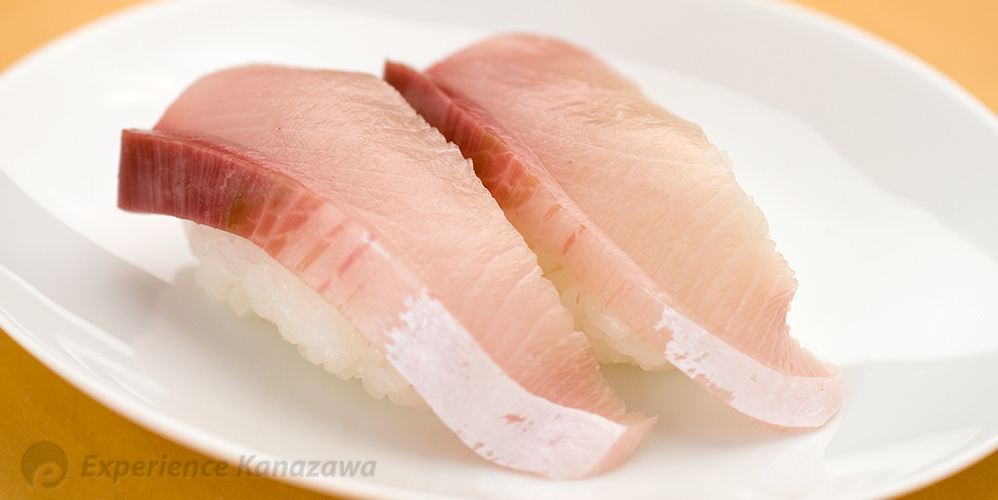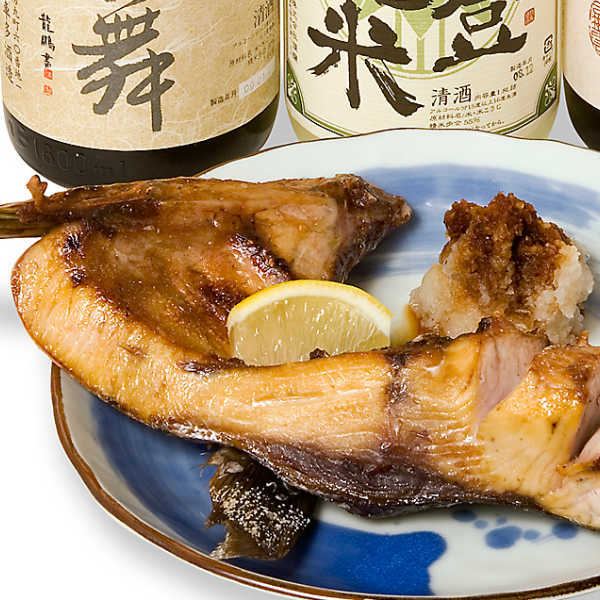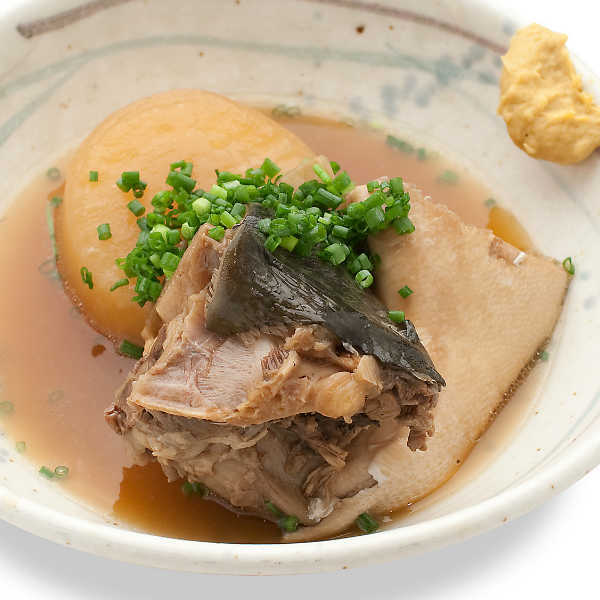Buri: Yellowtail

Yellowtail or "buri" is a must-eat in the Hokuriku region.
If you love the taste of tuna or salmon, yellowtail will probably be to your liking as well. Why do these fish taste so good? Because they contain fat, of course! But don’t worry so much about it. It's said the fatty acids, such as DHA and EPA, are actually good for your health. Those acids help to avoid arteriosclerotic vascular disease, heart attacks, and also diabetes. They contain vitamins B1, B2, and D as well. yellowtail.jpg Japanese tourists from big cities, like Tokyo or Osaka, expect good yellowtail when they are in Ishikawa.

Coco SHIZUO, Artex Inc.; Updated June 1, 2018
日本海 Nihonkai: The Sea of Japan

Why is the yellowtail from the Sea of Japan so fatty and delicious? It is because the temperature of the seawater is low. That's why winter is the best season for seafood. The winter yellowtail before spawning season is called "kan-buri," and it contains elevated levels of fat and histidine (this is an amino acid, one of the key elements for composing excellent flavor). Buri is known by different names depending on the stage of growth it’s in. In a similar fashion, and through the end of the Edo Period, members of the upper class (including royal families, samurai, and doctors) changed their names when they came of age and when they received promotions.
Thus those “fish” are so-called "shusse-uo" which means successful fish, by the way.
鰤カマ Buri-kama: Grilled Yellotail Gill
If you first simply want to taste yellowtail on its own, having it in the raw, such as with the sushi or sashimi styles, is the best way. However the grilled version is also popular, especially the gill or "buri-kama" which is seasoned with salt and tastes fantastic! Why do you think the gill is so popular? That is because it is comprised of the two fattiest parts of the fish. It has a tender, mild flavor that is great for searing or simply eating alone. Squeeze a slice of lemon, or place some grated daikon radish with soy sauce on top of the fish meat!

鰤大根 Buri-Daikon: Stewed Yellowtail with Rashish

While buri-kama simply tastes wonderful by itself, "buri-daikon" has more of a distinct Japanese flavor! Though before only the bony parts of the yellowtail were utilized, these days fillet cuts are also used. People didn't waste any part of the fish in the old days. They used the fish bone, head and fins to concoct a tasty soup. It's originally a winter dish, contains fatter yellowtail and winter daikon radish. Soy sauce and ginger flavors go well with white rice, and also with rice wine or sake, of course! Thus, Japanese people cook it at home, and also have it at their local izakaya. Honestly, after writing so much about this fish, I'm starting to crave some buri prepared in any fashion for myself!
日本海 Nihonkai: The Sea of Japan

Why is the yellowtail from the Sea of Japan so fatty and delicious? It is because the temperature of the seawater is low. That's why winter is the best season for seafood. The winter yellowtail before spawning season is called "kan-buri," and it contains elevated levels of fat and histidine (this is an amino acid, one of the key elements for composing excellent flavor). Buri is known by different names depending on the stage of growth it’s in. In a similar fashion, and through the end of the Edo Period, members of the upper class (including royal families, samurai, and doctors) changed their names when they came of age and when they received promotions.
Thus those “fish” are so-called "shusse-uo" which means successful fish, by the way.
鰤カマ Buri-kama: Grilled Yellotail Gill

If you first simply want to taste yellowtail on its own, having it in the raw, such as with the sushi or sashimi styles, is the best way. However the grilled version is also popular, especially the gill or "buri-kama" which is seasoned with salt and tastes fantastic! Why do you think the gill is so popular? That is because it is comprised of the two fattiest parts of the fish. It has a tender, mild flavor that is great for searing or simply eating alone. Squeeze a slice of lemon, or place some grated daikon radish with soy sauce on top of the fish meat!
鰤大根 Buri-Daikon: Stewed Yellowtail with Rashish

While buri-kama simply tastes wonderful by itself, "buri-daikon" has more of a distinct Japanese flavor! Though before only the bony parts of the yellowtail were utilized, these days fillet cuts are also used. People didn't waste any part of the fish in the old days. They used the fish bone, head and fins to concoct a tasty soup. It's originally a winter dish, contains fatter yellowtail and winter daikon radish. Soy sauce and ginger flavors go well with white rice, and also with rice wine or sake, of course! Thus, Japanese people cook it at home, and also have it at their local izakaya. Honestly, after writing so much about this fish, I'm starting to crave some buri prepared in any fashion for myself!
Kanazawa Area
Kenrokuenn Garden
Following Matsuo Bashô’s steps in Ishikawa - 1/6 [Introduction]
Following Matsuo Bashô’s steps in Ishikawa - 2/6 [Kanazawa]
Noto Area
Mitsukejima Island
Kaga Area
Following Matsuo Bashô’s steps in Ishikawa - 3/6 [Komatsu City]
Following Matsuo Bashô’s steps in Ishikawa - 4/6 [Natadera Temple]
Following Matsuo Bashô’s steps in Ishikawa - 5/6 [Yamanaka Onsen Town]
Following Matsuo Bashô’s steps in Ishikawa - 6/6 [Daishoji District]
Rosanjin in Yamashiro Onsen Town
Stroll Kanazawa in Rental Kimono - 1/2 [Kimono Rental]
Stroll Kanazawa in Rental Kimono - 2/2 [Kimono Stroll]
January
Enyukai: Geisha Party
February
Setsubun-Sai Festival
AUGUST
Issaki Hoh-Toh Matsuri
November
Enyukai: Geisha Party
